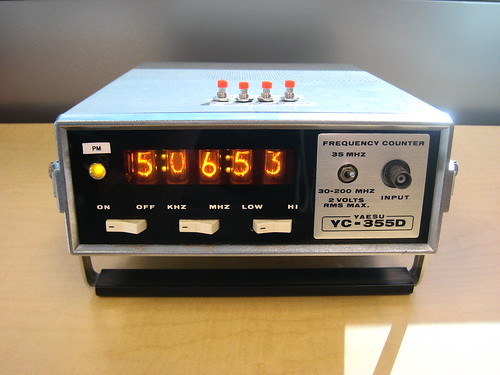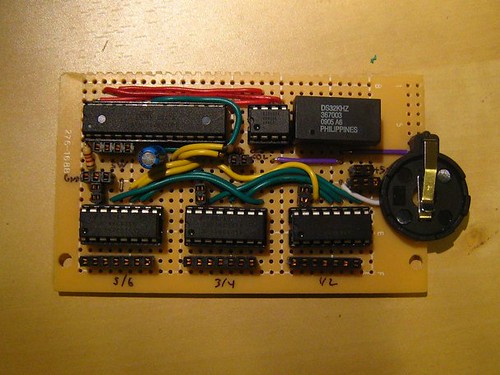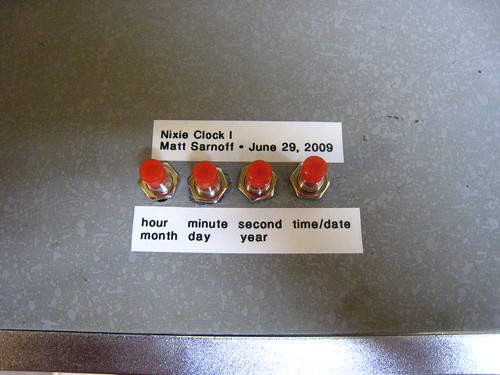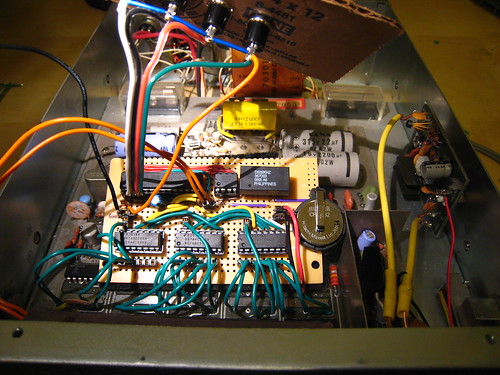Nixie Clock I
June 2009

Ah, Nixie tubes. Who doesn't love them?
Every hacker worth her/his salt has to make at least one Nixie clock. This is my first, created from a defunct Yaesu frequency counter I bought at the Silicon Valley Electronics Flea Market.
The thing didn't count, but the tubes and power supply worked fine. The manual contains full schematics; it contained five B5870S tubes and five 74141 decoder chips, dated 1971.
I cracked it open, desoldered the 7475 latch chips, built a clock circuit on a perfboard, spliced it in (with wires connected to the 74141 input lines, where the 7475s used to be), drilled holes in the top for buttons, and closed it back up.
But how would I tell time with just 5 tubes? Easy; use a long NE-2 neon bulb to act as a tens-of-hours "digit"! This allows the clock to tell 12-hour time with seconds, as well as the date (in month-day-year format.) The cathode in the bulb is a little shorter and thicker than a Nixie tube "1," but it mostly works well.
I also "cheated" and used LEDs for the colons (poked through the cardboard shielding behind the tubes) and the AM/PM indicator.
The clock circuit uses an ATmega48, a DS1307 real-time clock chip, a DS32kHz temperature-compensated crystal oscillator, (free sample from Maxim), and a lithium backup battery. Here's the board I made:

In the top row. you can see the AVR, the DS1307, and the oscillator. The bottom row consists of three 74HC595 shift registers (24 bits) used to drive the 5 digits and the neon "tens" tube.
I drilled four holes in the top for four buttons; set hour/month, set minutes/day, set seconds/year, and time/date switch.

Here's a shot of the board tucked inside the case. (At this point, the buttons were still mounted on a piece of cardboard!)

Here's a video of the clock in action, while the timekeeping circuit was still on a breadboard:
photos
Photo gallery is on Flickr.schematic
(click to enlarge)
Download gEDA schematic: nixieclock1.sch
May require custom symbols from my symbols directory.

